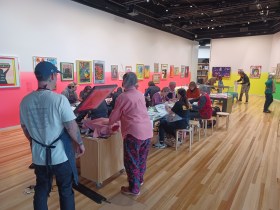Across the country, Australian universities are reassessing their course offerings, with arts and humanities programs frequently among those targeted for restructuring or closure. The future of creative education is being reshaped amid broader financial pressures and long-term policy changes, and it’s creating several crisis points. Qualified young professionals are disappearing from regional areas, high school students are disincentivised to prepare for creative tertiary study and university staff are burned out from fighting for a system that is hostile towards them.
Australian arts and humanities education is being slashed everywhere – what’s at stake?
From staff redundancies to course closures, arts and humanities education in Australia is undergoing significant structural change.
2 Jun 2025 14:56






